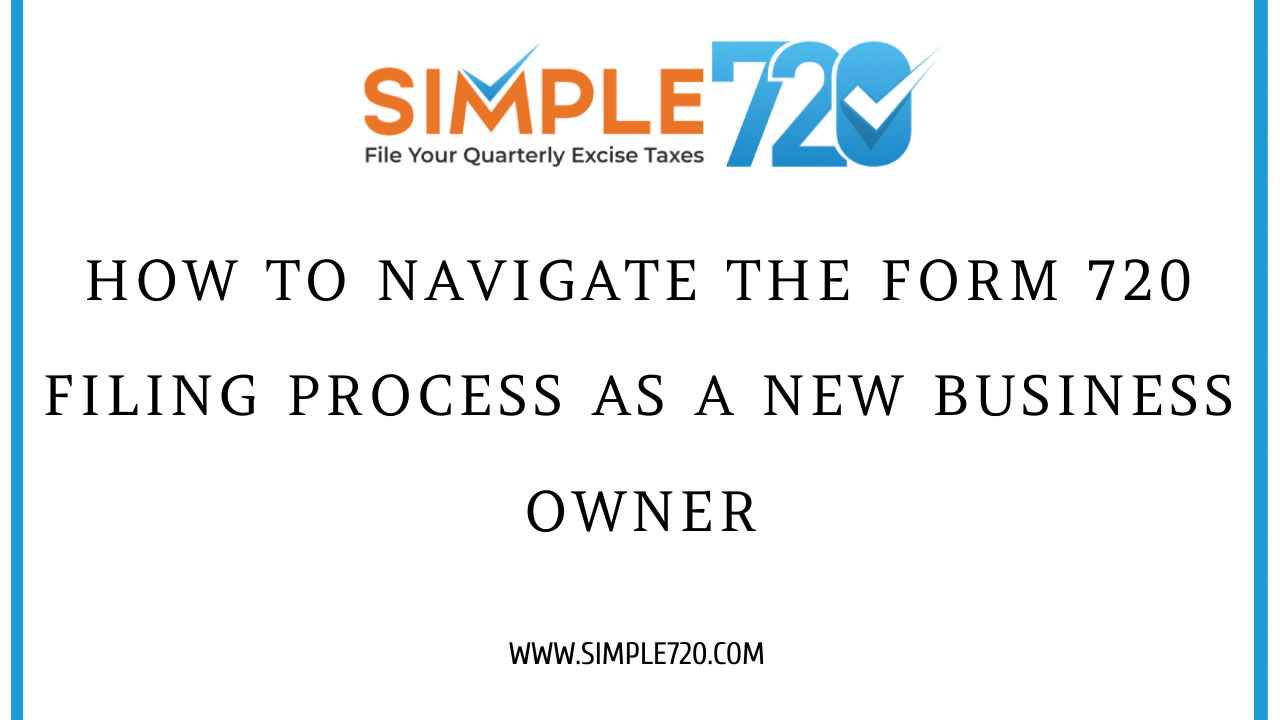
The Ultimate Form 720 Filing Guide for New Business Owners
As a new business owner, it’s important to understand the various tax requirements that apply to your business. One of these requirements is the filing of Form 720, also known as the Quarterly Federal Excise Tax Return. This form is used to report and pay excise taxes on certain products and services sold or used in your business.
If you’re new to the world of taxation, it’s understandable that the Form 720 filing process might seem intimidating. But don’t worry! In this blog post, we’ll guide you through the steps you need to take to navigate the Form 720 filing process as a new business owner.
1. Determine if you need to file Form 720
The first step in the Form 720 filing process is to determine if you’re required to file the form. In general, you need to file Form 720 if you’re engaged in a business that deals with certain excise taxable products and services.
Some common examples of products and services subject to excise tax include:
- Alcohol
- Tobacco products
- Firearms
- Telephone communication
- Air transportation
If your business deals with any of these products or services, you’ll likely need to file Form 720. However, there are some exceptions and exemptions that may apply, so it’s important to review the IRS instructions for Form 720 or consult with a tax professional to determine your specific filing requirements.
2. Gather the necessary information
Once you’ve determined that you need to file Form 720, the next step is to gather the necessary information to complete the form. This includes information such as:
- Your business name, address, and employer identification number (EIN)
- The type of excise tax you’re reporting
- The amount of taxable products or services sold or used during the quarter
- The amount of tax due
Make sure to keep accurate records of your business activities throughout the quarter so that you’re prepared to complete Form 720 when the time comes.
3. Complete and file Form 720
Once you have all the necessary information, it’s time to complete and file Form 720. You can file the form electronically using the Electronic Federal Tax Payment System (EFTPS) or by mail to the address listed on the form.
When completing the form, make sure to double-check your information to ensure accuracy. Mistakes or omissions can result in penalties or interest charges.
4. Pay any taxes due
If you owe excise tax, you’ll need to pay it when you file Form 720. The IRS accepts various methods of payment, including electronic payment, credit or debit cards, and check or money order.
Make sure to pay any taxes due by the filing deadline to avoid penalties or interest charges. The deadline for filing Form 720 is the last day of the month following the end of the quarter (e.g., April 30 for the first quarter).
Navigating the Form 720 filing process as a new business owner can be challenging, but by following these key steps, you can ensure compliance with IRS regulations and avoid costly penalties. Remember to consult with a tax professional or review the IRS instructions for Form 720 for more detailed information on your specific filing requirements.
